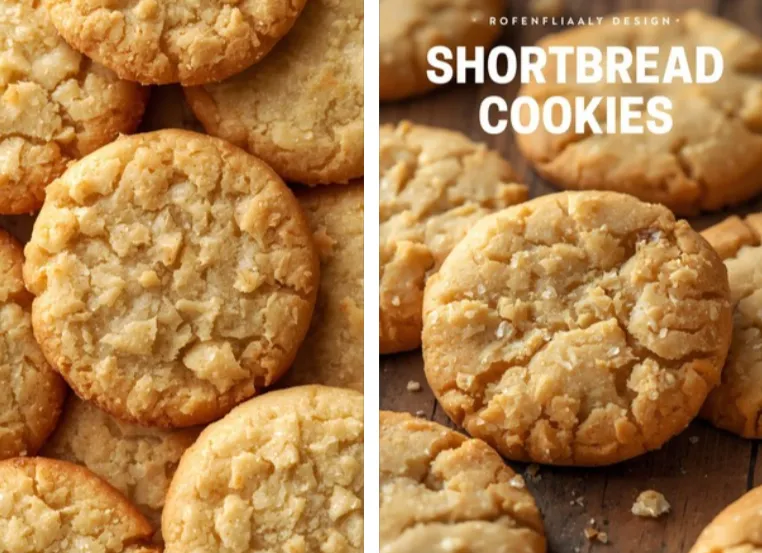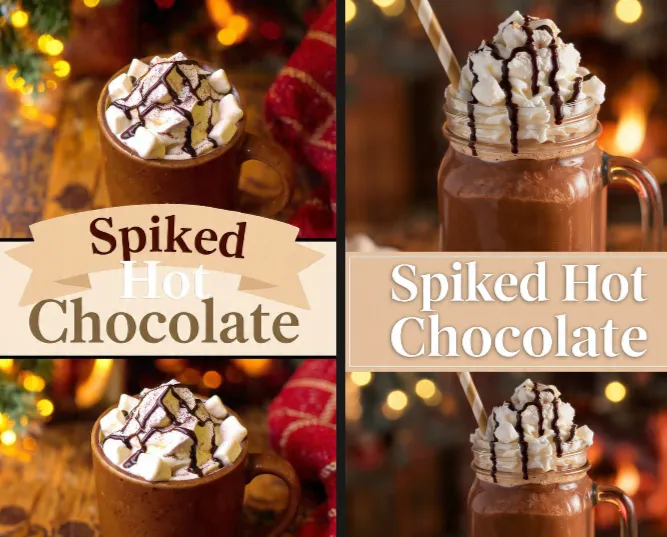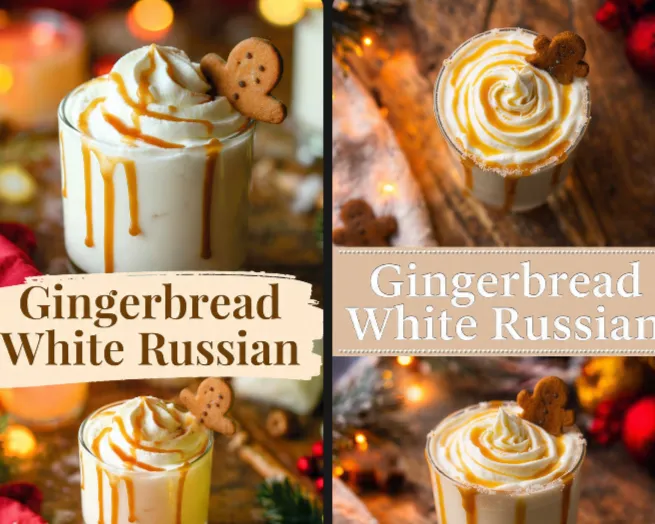Shortbread Cookies are the epitome of simplicity and elegance in baking. With just a few basic ingredients — butter, sugar, and flour — they create a cookie that’s rich, crumbly, and melt-in-your-mouth delicious. Originating from Scotland, shortbread has become a beloved treat around the world, known for its buttery flavor and delicate texture. Whether served plain, dipped in chocolate, or flavored with vanilla or citrus, these cookies are a timeless classic that never goes out of style.
The Essence of Shortbread Cookies
Shortbread Cookies are a celebration of butter. Their name comes from the old Scottish term “short,” which refers to the crumbly texture created by a high fat-to-flour ratio. Unlike other cookies that rely on eggs or leavening agents, shortbread gets its structure purely from the combination of butter and flour. The result is a tender, crisp cookie that breaks apart with a satisfying snap and melts on the tongue. The simplicity of shortbread allows the quality of the ingredients to shine, making it a true test of a baker’s skill and attention to detail.
Why Choose Shortbread Cookies?
These cookies are the perfect combination of flavor, texture, and versatility. The buttery richness provides depth, the sugar adds sweetness, and the flour gives structure. They’re easy to make, require minimal ingredients, and can be shaped, cut, or pressed into molds for beautiful presentation. Shortbread Cookies are also incredibly versatile — they can be flavored with vanilla, lemon, lavender, or even chocolate. They’re perfect for holidays, tea parties, or as a simple yet elegant gift. Their long shelf life makes them ideal for make-ahead baking and gifting.
The Science of a Perfect Shortbread Cookie
The secret to perfect shortbread lies in the balance of ingredients and technique. Butter is the star, providing both flavor and texture. The fat coats the flour particles, preventing gluten formation and resulting in a tender, crumbly texture. Sugar sweetens the dough and contributes to the cookie’s crispness. The type of sugar used — granulated, powdered, or brown — affects the texture. Granulated sugar gives a crisp bite, while powdered sugar creates a softer, melt-in-your-mouth texture. The dough must be mixed gently to avoid overworking the gluten, which can make the cookies tough. Baking at a low temperature ensures even cooking and prevents browning, preserving the pale, golden color that defines classic shortbread.
Choosing the Best Ingredients
- Butter: Use high-quality unsalted butter for the best flavor. European-style butter with higher fat content gives a richer taste.
- Sugar: Granulated sugar for crispness, powdered sugar for tenderness, or a mix of both for balance.
- Flour: All-purpose flour works best for structure and texture.
- Salt: Enhances flavor and balances sweetness.
- Vanilla Extract: Adds warmth and depth.
- Optional Add-ins: Lemon zest, almond extract, or finely chopped nuts for variation.
Step-by-Step Recipe: Classic Shortbread Cookies
Ingredients
- 1 cup (225 g) unsalted butter, softened
- ½ cup (100 g) granulated sugar or powdered sugar
- 2 cups (250 g) all-purpose flour
- ¼ teaspoon salt
- 1 teaspoon pure vanilla extract (optional)
Instructions
- Preheat the oven: Set the oven to 325°F (165°C) and line a baking sheet with parchment paper.
- Cream the butter and sugar: In a large bowl, beat the butter and sugar together until light and creamy, about 2–3 minutes. Do not overbeat; the goal is to combine, not aerate.
- Add vanilla and salt: Mix in the vanilla extract and salt until incorporated.
- Add the flour: Gradually add the flour, mixing on low speed or by hand until the dough just comes together. The dough should be soft but not sticky.
- Shape the dough: Turn the dough onto a lightly floured surface and gently knead it into a smooth ball. Roll it out to about ½ inch thickness.
- Cut shapes: Use a knife or cookie cutters to cut the dough into rectangles, rounds, or traditional wedges. Place them on the prepared baking sheet.
- Chill the dough: Refrigerate the shaped cookies for 15–20 minutes before baking to help them hold their shape.
- Bake: Bake for 18–22 minutes, or until the edges are just beginning to turn golden. The cookies should remain pale.
- Cool: Let the cookies cool on the baking sheet for 5 minutes before transferring to a wire rack.
Tips for Perfect Shortbread Cookies
- Use cold butter for a crisper texture: Softer butter creates a more tender cookie, while cold butter gives a firmer bite.
- Don’t overmix: Overworking the dough develops gluten, making the cookies tough.
- Chill before baking: Helps the cookies retain their shape and prevents spreading.
- Bake low and slow: Ensures even baking and prevents browning.
- Use a fork to prick the dough: Allows steam to escape and prevents puffing.
- Store properly: Keep in an airtight container to maintain freshness.
Variations and Creative Twists
Chocolate-Dipped Shortbread
Dip half of each cookie in melted dark or white chocolate and let it set for a luxurious finish.
Lemon Shortbread
Add 1 tablespoon of lemon zest and a teaspoon of lemon juice for a bright, citrusy flavor.
Almond Shortbread
Replace ¼ cup of flour with finely ground almonds and add almond extract for a nutty twist.
Lavender Shortbread
Add 1 teaspoon of dried culinary lavender for a floral, aromatic cookie.
Brown Sugar Shortbread
Use brown sugar instead of white for a deeper, caramel-like flavor.
Spiced Shortbread
Add cinnamon, nutmeg, or cardamom for a warm, fragrant variation.
Serving Suggestions
Shortbread Cookies pair beautifully with a variety of accompaniments:
- Tea: Earl Grey, chamomile, or green tea complement the buttery flavor.
- Coffee: Espresso or cappuccino balances the sweetness.
- Hot Chocolate: A rich pairing for winter indulgence.
- Fruit: Fresh berries or citrus slices add brightness.
- Ice Cream: Crumble shortbread over vanilla or caramel ice cream for texture.
Nutritional Benefits
While Shortbread Cookies are a treat, they offer some nutritional value when made with quality ingredients:
- Butter: Provides healthy fats and flavor.
- Flour: Adds carbohydrates for energy.
- Sugar: Offers quick energy in moderation.
- Vanilla and citrus: Add antioxidants and natural aroma.
Enjoyed in moderation, they’re a dessert that nourishes both the heart and the palate.
Frequently Asked Questions
Can I make the dough ahead of time?
Yes, refrigerate the dough for up to 3 days or freeze for up to 3 months.
Can I freeze baked cookies?
Yes, store in an airtight container and freeze for up to 2 months.
Why did my cookies spread?
The butter may have been too soft, or the dough wasn’t chilled long enough.
Can I use salted butter?
Yes, but reduce or omit the added salt.
How do I make them softer?
Use powdered sugar instead of granulated sugar and bake for a shorter time.
How do I make them crispier?
Use granulated sugar and bake a few minutes longer.
Hosting with Shortbread Cookies
These cookies are perfect for entertaining because they’re elegant, simple, and easy to make in large batches. Serve them as part of an afternoon tea spread, package them as edible gifts, or use them as a base for layered desserts like millionaire’s shortbread. For holidays, decorate with chocolate drizzle or colored sugar. For weddings or showers, cut them into heart or flower shapes and wrap them individually. They’re a dessert that fits every occasion, from casual gatherings to formal celebrations.
Creative Additions
- Add chopped nuts for crunch.
- Mix in mini chocolate chips for sweetness.
- Add a drizzle of caramel or honey glaze.
- Sprinkle coarse sugar before baking for sparkle.
- Use cookie stamps for decorative patterns.
Nutritional Information (per cookie)
- Calories: 180–210
- Protein: 2 g
- Fat: 10 g
- Carbohydrates: 22 g
- Fiber: 0.5 g
- Sodium: 90 mg
Perfect Pairings
- Wine: A sweet dessert wine or sherry complements the buttery flavor.
- Coffee: Espresso or latte enhances the richness.
- Tea: Black or herbal teas pair beautifully.
The Appeal of Shortbread Cookies
What makes Shortbread Cookies so irresistible is their perfect harmony of flavor and texture. The buttery dough contrasts beautifully with the crisp edges and tender crumb. They’re a dessert that feels indulgent yet comforting, simple yet sophisticated. Their versatility makes them suitable for any occasion — from a cozy afternoon tea to a festive celebration. The combination of butter, sugar, and flour creates a flavor profile that’s timeless and universally adored.
The Art of Baking Shortbread Cookies
Baking the perfect shortbread is about precision and patience. The key is to achieve the right texture — crumbly but not dry, crisp but not hard. Using fresh ingredients, proper technique, and careful timing ensures cookies that are both beautiful and delicious. The pale golden color, delicate aroma, and melt-in-your-mouth texture make them a true showstopper. Once mastered, this recipe becomes a go-to for any baker, a symbol of craftsmanship and tradition.
Conclusion
Shortbread Cookies are more than just dessert — they’re a celebration of flavor, texture, and tradition. With their buttery richness, crisp edges, and melt-in-your-mouth crumb, they deliver everything one could want in a cookie. Whether served at a family gathering, a holiday feast, or a quiet afternoon tea, they bring comfort and joy to every table. The combination of simple ingredients, careful technique, and timeless flavor transforms this classic recipe into something truly extraordinary. With the tips, variations, and techniques shared in this guide, you can confidently create Shortbread Cookies that are buttery, flavorful, and unforgettable — a timeless masterpiece that proves that true elegance in baking lies in simplicity and precision.






